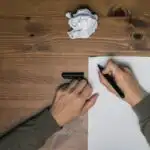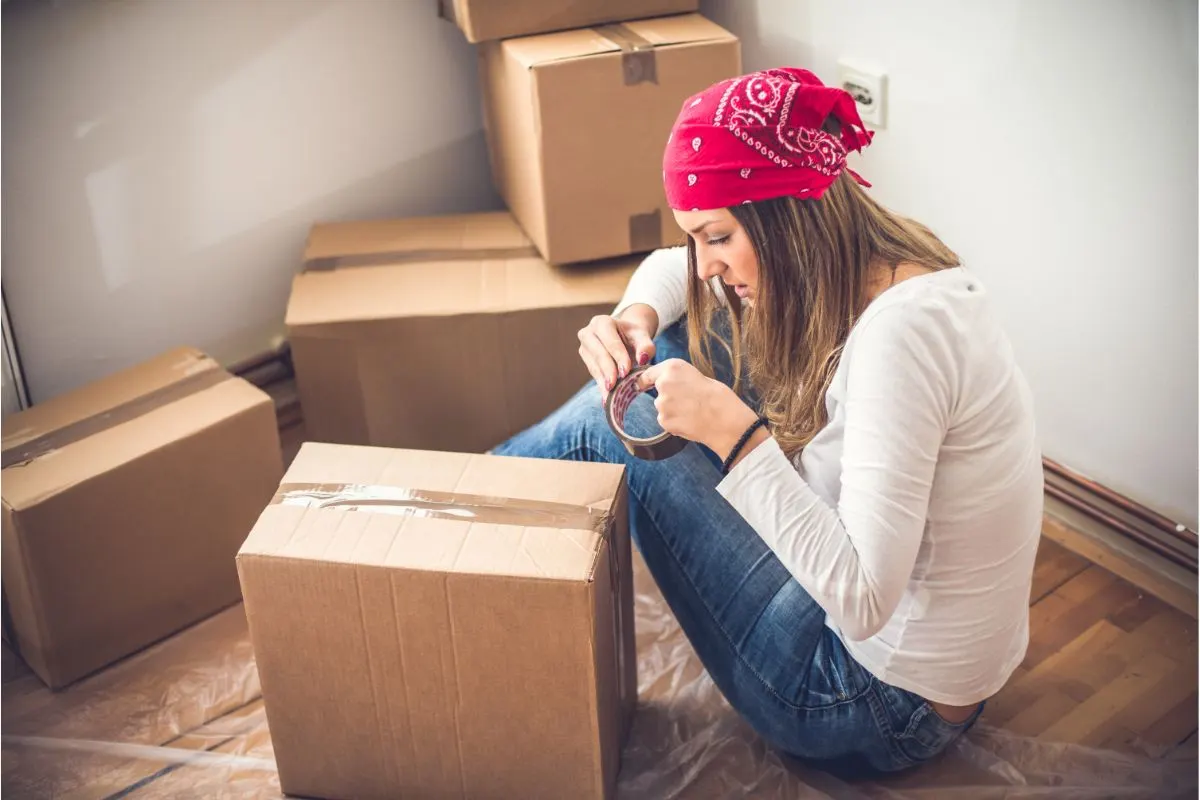Science is an incredibly fascinating and insightful subject that can teach young students a lot about the world they live in, and how they interact with it.

It can be an incredibly rewarding and enriching subject to study, but you need to make sure that you maintain their focus so that they learn as much as possible.
This is very often easier said than done, but with the right activities, you can easily get the kids involved with the subject, and help them to enjoy themselves, while also learning a lot of valuable information.
However, there are so many science project ideas out there across the web, so you have probably found yourself a bit overwhelmed by choice.
Luckily, we are here to take you through the very best 8th-grade science projects that you can try out with the students to help them to learn.
Read on down below to get started!
1. Fingerprints
This biology-focused activity will help the children to learn a little more about genetics, as well as some of the many things that make them unique and special.
Get the kids to create thumbprints on paper, with a little bit of ink, and then encourage them to take this paper home to grab thumbprints of their parents or even their siblings.
Once the kids bring them back to class, ask them to investigate some of the ways that fingerprints might be similar between generations, as well as how their own fingerprints differ from those of other children in the class.
2. Chlorophyll In Plants
Chlorophyll is one of the most important components in many unique plants across the world, and it is the key component in providing much of the green color that these plants boast.
There are numerous ways that you can experiment with chlorophyll in class, and help your children to better understand what it does, and how levels of it can differ from plant to plant.
These experiments look at which leaves boast the most color, and which ones, thus, contain the most chlorophyll.
3. Making Marshmallows
This excellent activity will teach the students a lot about food science, especially how mixing together specific ingredients with specific values will create very different final results.
This is an incredibly fun project that will allow the students to get sticky and messy, while also creating delicious treats that they can then enjoy together once the project has been wrapped up.
The students will love getting involved with this project, while also learning a lot about how chemistry plays a key role in the kitchen!
4. Material Insulation Experiment
This experiment will help to teach the students to recognize the difference between conduction and insulation.
The students will be tasked with using various household materials to decide which materials work best as insulators against different temperatures.
This can also help to teach the students the role that insulation plays within construction, and how our buildings are kept insulated from the outside world.
5. T-Shirt Tie Dye
Tie-dye t-shirts are back in fashion massively, so the students will really love getting involved with this project that not only results in some wonderful-looking t-shirts but also helps them to learn about the various materials that are used to make t-shirts.
This experiment will tell the students a lot about the different fibers used to make t-shirts, as well as where those fibers are derived from, helping them to gain a greater appreciation of what goes into making their various belongings.
6. Creating Crystals
This chemistry experiment will easily be one of the coolest experiments that the students will have ever experienced, as it makes use of only a few very simple materials, and yet results in incredible and observable results that the students can even bring home with them to show off to their parents.
The students will be able to create crystals of all kinds of shapes and colors, by making use of food dyes, so they can create some of the coolest crystal formations around.
7. The Water Cycle
We loved playing around with this experiment, because it helped the students to understand how rain works, what it does, and how it comes about.
This amazing experiment will help the students to understand the water cycle, and the role that it plays in helping nature to continue thriving.
The experiment is also incredibly easy to set up, so you can easily get it ready for your class’ lesson in no time, and help them to learn.
8. Bendy Bones
This wacky science experiment will allow the students plenty of time to play around with science, and they will definitely get a laugh out of the results of this experiment.
After leaving the bone within the jar of vinegar for some time, it will become bendy.
This will teach the students how different acids dissolve and eat away at different parts of organic matter, which is what allows the acids to make the bones bendy and flexible.
You can also use this as a great opportunity to reaffirm the importance of milk and calcium in creating strong bones.
9. Flower Dissection
Dissection is a key part of many children’s school science experiences, but with this experiment, they don’t have to worry about the grisly task of dissecting an animal.
This experiment allows the students to carefully dissect flowers in order to see the various components in the average flower that help them to thrive and grow to be healthy.
This incredibly fascinating experiment allows the students to get directly involved, and learn in a more interactive manner.
10. Create Elephant Toothpaste
This is a really exciting experiment that will get the entire class involved and allows the students to get a little bit messy.
This experiment will teach the students about various chemical reactions, and what happens when certain elements are mixed together.
The kids will delight in seeing the chemical reaction take place, and watching as the ‘Elephant Toothpaste’ compound flows out of their chosen bottle or vessel.
It will also teach them a lot about exothermic reactions, and how they play a key role in creating specific compounds.
11. The Effect Of Stress On The Body
Stress can have a very physical effect on the human body, and this experiment will help the students to understand what it is that stress does to the body, and the many ways in which the body reacts to stress.
The experiment is very simple, and involves the students taking measurements of body temperature at a relaxed state, and the body temperature when in a state of stress.
The students will likely find themselves very surprised by some of the results, and the experiment will prove incredibly valuable in teaching them about stress, and why it needs to be carefully managed for the betterment of physical and mental health.
12. Create Infinity Mirrors
Visual illusions are not only incredibly hypnotic to look at, but they can also easily be used for educational purposes, to teach students about how light interacts with the world around them.
With just a few basic materials, and a little bit of ingenuity, your students can easily create an experiment that results in an infinity-mirror effect that proves incredibly mind-blowing to look at.
The students will love creating these infinity mirrors, and looking at the immensely trippy results that they produce.
13. Sound Experiments
Teaching students about how sound travels can often involve the use of dull and unexciting charts to depict soundwaves, but with this awesome experiment, you can help the students to actually visualize the effect that sound has on the world around it.
There are a number of different experiments that you can do with your students to show off the unique movements of sound, so make sure to try out a number.
The students will enjoy watching as sound causes different reactions to occur within different materials.
14. Hard Water Experiment
This experiment will help students to understand what it means for water to be ‘Hard’, and how the hardness of water can cause the water to react in different ways when different materials are placed into it.
We loved performing this experiment with the students, because it was incredibly easy to set it all up, and yet resulted in a truly enriching learning experience that helped the students to learn a lot about chemistry and some of the various compounds that can be found in water.
15. Rube-Goldberg Machines
To help teach your students about the power of gravity, and the effect that it has on everyday objects, then this experiment is an incredibly safe bet.
Encourage the children to get creative, to create machines that allow small balls to roll around from point A to point B.
Make sure to provide the students with plenty of simple construction materials, like disposable cups, popsicle sticks, and glue!
The students will really enjoy creating machines that allow the balls to move quickly, and competing to create the most exciting machines in the class.
16. Homemade Water Filters
One of the experiments we touched upon just earlier involved the students learning a little more about the various compounds that can be found in ‘Hard’ water, while this experiment helps them to take this knowledge a little further, to understand how to extract these compounds from water.
The students will love creating the filters themselves, and then watching as the water they put through it becomes filtered and the compounds are removed!
We loved how simple this experiment was, despite how fascinating and exciting the end results proved to be.
17. Raft Building
This experiment allows the students to make use of very simple materials in nature, or you can bring in a number of materials for them to choose from to create their own rafts.
This experiment will teach the students about surface tension, and how it is key in helping their rafts to float on the surface of the water.
This experiment can also include a competitive element, as you can challenge the students to create the most effective raft, and see which one can bear the greatest load before sinking!
18. Candy Chromatography
Candies like Skittles and M&Ms include all kinds of coloring agents that help to give them such vibrant and colorful looks.
This experiment takes advantage of this and allows the students to watch as the colors slowly bleed out of these candies, onto paper.
What we loved about this experiment was that it was incredibly easy to put together, and only involved a few basic components that came together to create some great results.
Watching as the colors bled out of the candies provided a great socializing opportunity for the students to grow closer as they watch with excitement.
19. Extracting Onion DNA
It can be incredibly mindblowing for young students to learn about the chemicals that make up numerous organic items, and biological materials.
This experiment allows the students to get up close and personal with DNA, without having to make use of any fancy technology, or microscopes!
This experiment is also incredibly easy for the children to get involved with, and allows them to work together to better understand the basics of DNA, and the role that DNA plays in making each onion unique.
The experiment also allows the students to get a little bit messy, which makes the lesson more satisfying for everyone!
20. Ice Race
This simple experiment makes use of the slippery nature of ice, as the students compete to discover which materials will help ice to melt quicker, and thus allow it to move more quickly along a set path.
This experiment is not only a lot of fun and allows the students to get a little bit competitive, but it also teaches them about how certain chemical reactions can generate heat, and thus cause ice to melt at differing rates.
This experiment is also mostly mess-free, so teachers don’t need to worry about hours of cleanup after it is wrapped up!
21. Phototropism Experiment
This experiment is sure to blow the students’ minds, as they will learn about how plants actively seek out light sources, in order to grow more efficiently.
The experiment is done over a long period, as the students move their lights around slightly day upon day, above the plants, to watch as the plants move accordingly, in order to take advantage of this light, and grow more effectively.
This experiment will help to teach the students about the inner lives of plants, and how they manage to grow so effectively, even in harsher conditions where there may be less available light.
For more inspiration, take a look at these 9th-grade science projects.
To Wrap Up
These are just a small few of the best 8th grade science projects that you can try with your class, but they are easily amongst the very best.
If you are looking for fun and engaging ways to get your students involved with the world of science, then you simply need to try a number of these experiments in class!
Looking for more information? Take a look at how anchor charts can help with science class.
- Homeschooling In High School: Pros And Cons - February 24, 2024
- How Do I Withdraw My Child From School To Homeschool? - February 23, 2024
- How To Not Go Crazy Homeschooling Kids: A Guide For Frazzled Parents - February 22, 2024









Leave a comment